Jaw crusher
Jaw crushers are used for coarse crushing of brittle, medium-hard to hard materials.
Jaw crushers are used for coarse crushing of brittle, medium-hard to hard materials up to a Mohs hardness of approx. 8.5. Depending on the model, crushing ratios of up to 1:200 are possible.
Our jaw crushers are available in two versions: our laboratory version with integrated control, feed chute and collection container and a version for installation in plants. For the latter, the feed chute, collection container and control unit are omitted.
Crushing & Milling in the jaw crusher takes place in a wedge-shaped crushing chamber between a fixed and a movable crushing jaw. All of our devices impress with many features that make your work easier.
Depending on the crusher size, material and set crushing gap, crushing ratios of up to 1:200 can be achieved.
The final fineness obtained is largely determined by the set discharge gap, the stroke and the shredding behavior of the material.
This enables the crushing chamber to be opened quickly without tools for cleaning, removal of impurities and full inspection of wear on the crusher jaws and side wear plates.
This can be read off via a scale on the housing or in the app. The zero point can be readjusted via the app and on the scale if the crushing jaws are worn.
From size EB 100×80-L
This doubles the service life of the crusher jaws, as the main wear usually occurs in the area of the smallest crushing gap.
Via connection flange in the non-intrusive feed chute.
With the sealed and lifetime-lubricated bearings up to size EB 200×125-L.
Hard cast steel, stainless steel, tungsten carbide or zirconium oxide
for driving under the jaw crusher with pallet truck/forklift truck
to divide the sample quantity into 3 times 1:4 and 2 times 1:8
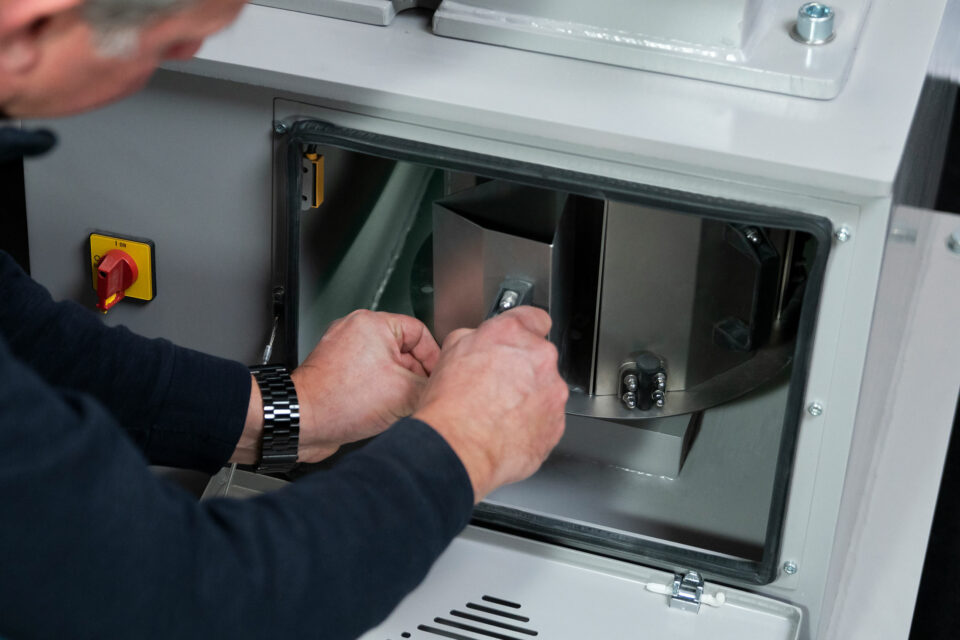
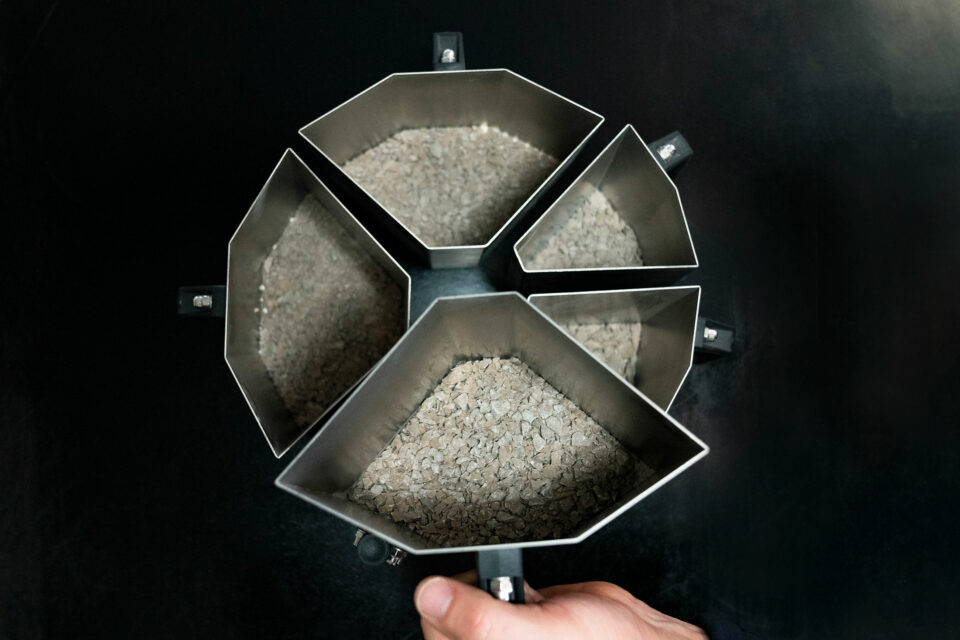
Crushing & Milling in the Jaw crushers takes place in a wedge-shaped crushing chamber between a fixed and a movable crushing jaw. In the upper suspension, the movable crusher jaw is driven by an eccentric shaft and supported in the lower area by a continuously lockable eccentric shaft. Due to this special geometry, the crusher jaw performs an elliptical circular movement both in the upper suspension and at the discharge gap. Due to this sequence of movements, the crushing chamber is reduced with each rotation, which leads to material crushing, but is also enlarged so that material is loosened up and can slide down. The wedge-shaped form of the crushing chamber and the stroke specified by the eccentric shaft allow the material to slide deeper into the crushing chamber with each revolution until it can leave the crushing chamber crushed according to the set gap.
The arrangement of the movable crushing jaw enables both a high throughput rate and a high achievable final fineness, whereby this depends not only on the design but also on the size of the set discharge gap on the crusher and the crushing behavior of the crushed material.
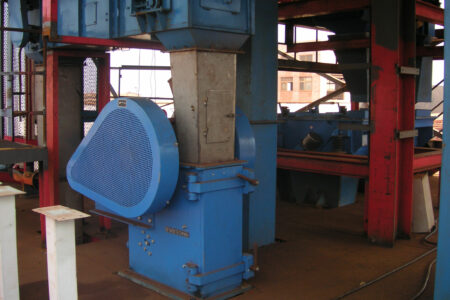
Jaw crushers are used for coarse crushing of brittle, medium-hard to hard materials.
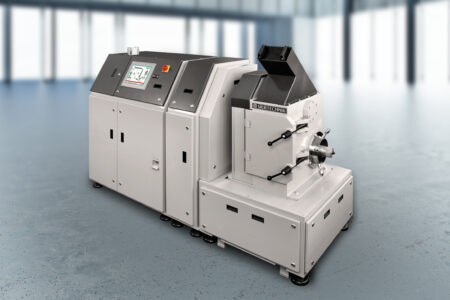
The fully automatic grinding and pressing system can be used to convert bulk material samples into test specimens for an XRF or XRD analyzer.
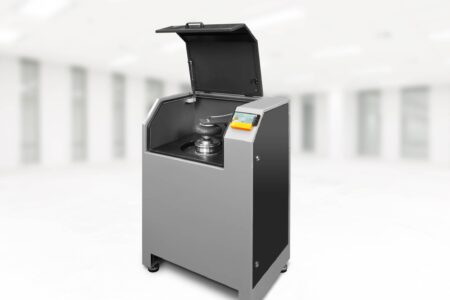
The standard in sample preparation for fast, loss-free and reproducible ultrafine comminution and homogenization of samples.
Available in many different versions, from manual to fully automatic!

Find the right contact for your region.
We have the right solution for every task. And if not, we’ll work with you to find one. Get in touch with us!
Our specialists will be happy to advise you individually on site or remotely, and are available to answer any questions you may have. Send us a message using our
